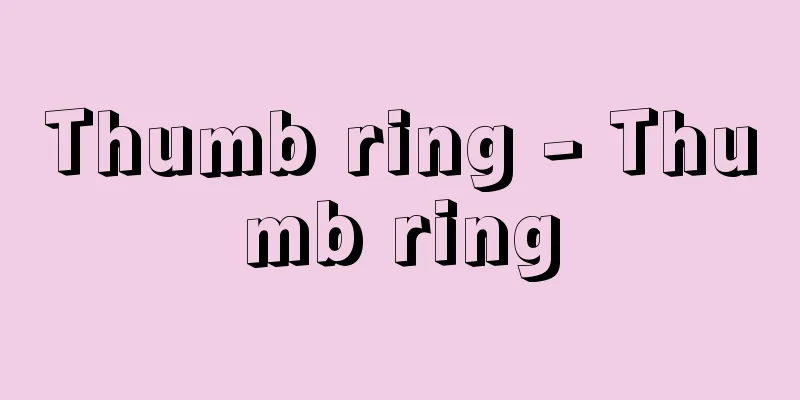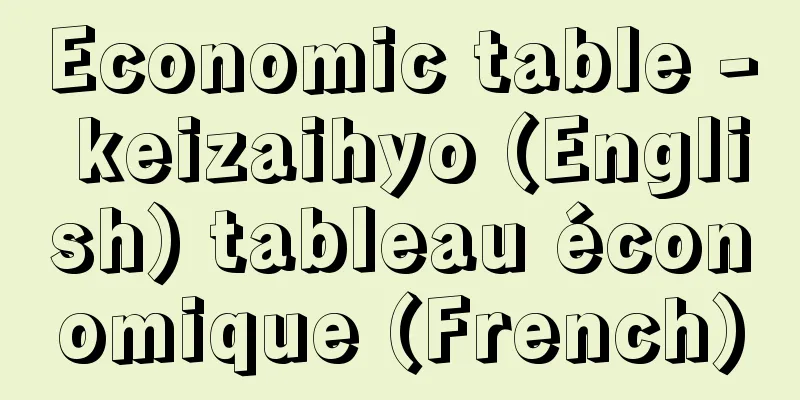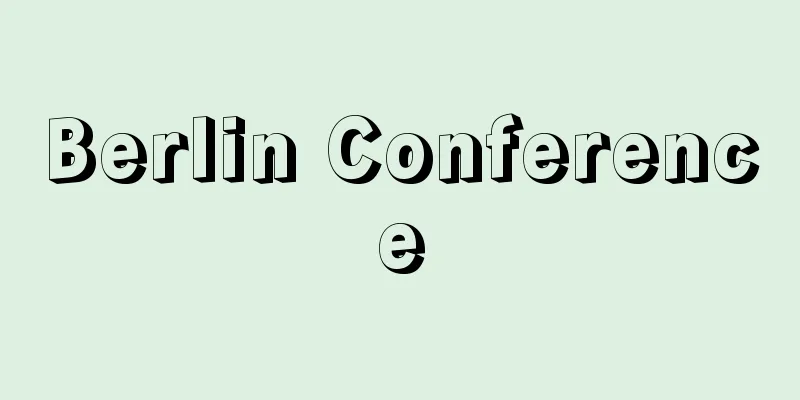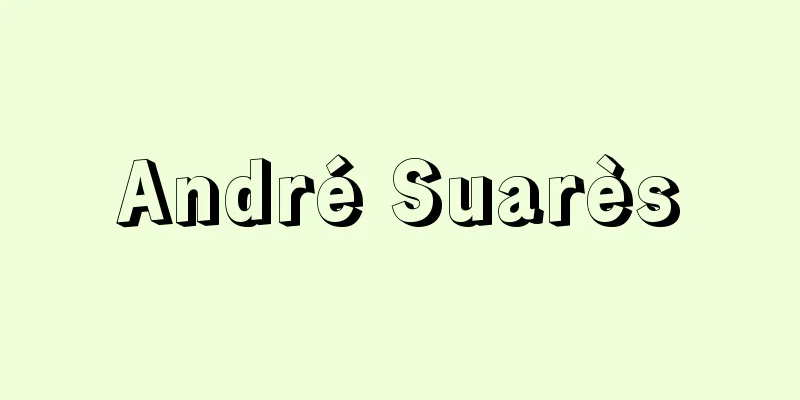Public telephone - public telephone
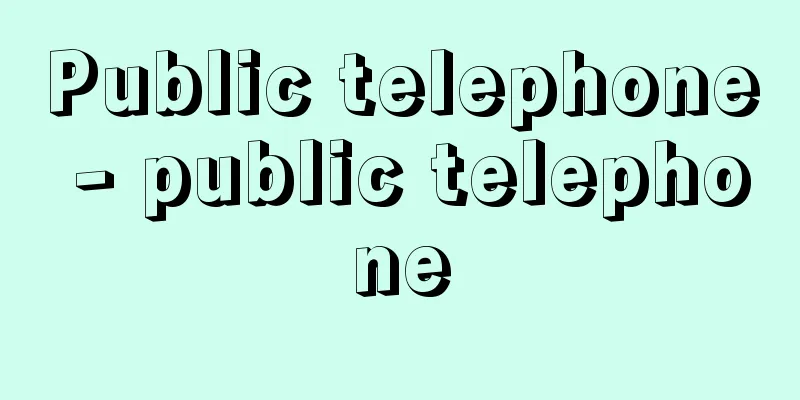
|
A telephone installed in an easy-to-use location for the purpose of being used by an unspecified number of people. Public telephones used in Japan were divided into two types: street public telephones installed on the street like telephone booths, and in-store public telephones installed in shops and kiosks, but this distinction disappeared in 1995 when the commissioned red telephones were abolished, and instead, in many cases, public telephones are divided into general public telephones and mobile public telephones (train, ship, and aircraft public telephones). There are also pink telephones installed in coffee shops and restaurants, which are a type of subscriber telephone but can be used by an unspecified number of people. [Noritaka Uji and Hirofumi Hoshino] historyJapan's telephone exchange service began in Tokyo and Yokohama in 1890 (Meiji 23), and public telephones began at the same time, with telephone offices being set up inside telegraph offices and other locations. The first public telephones appeared on the streets in September 1900 (Meiji 33), installed inside Shinbashi and Ueno stations in Tokyo. The following October, the first public telephone booth was built near Kyobashi. At the time, these were called "automatic telephones," and had two slots for 5 sen and 10 sen coins, and would notify the operator when money had been inserted by a different sound. With the introduction of the automatic system in 1925 (Taisho 14), the name was changed to "public telephone." After undergoing various changes, these became "blue telephones." Coin-operated public telephones appeared in January 1953, red telephones in October of the same year, and pink telephones in 1959. Initially, long-distance calls required application to an exchange operator, but as the areas where calls could be made automatically and instantly expanded, public telephones that allowed users to make long-distance calls by dialing the number themselves came into practical use in 1966, dramatically improving public telephone services. Furthermore, as only one type of coin was used, 10 yen, there were growing calls for improvements to the inconvenience of use (such as exchanging money and inserting additional coins) as long-distance calls increased, and so yellow telephones, which could also be used with 100 yen coins, were introduced in 1972. Then, in 1982, magnetic card-type public telephones were introduced to eliminate the hassle of inserting coins and exchanging change and to make them more convenient to use. In 1995, all public telephones except for pink telephones were replaced with magnetic card-type public telephones (including coin-compatible types), and the blue, red, and yellow telephones disappeared. [Noritaka Uji and Hirofumi Hoshino] Public telephones on the streetOriginally, they were so-called "blue telephones," telephones that could be used all day. They were divided into box public telephones, which were mainly installed in telephone booths on the streets, and desk public telephones, which were installed in cabinets or buildings such as train stations, hotels, and hospitals. For both box public telephones and desk public telephones, there were blue telephones that only accepted 10-yen coins, and yellow telephones (introduced in 1972) that also accepted 100-yen coins. [Noritaka Uji and Hirofumi Hoshino] Storefront public telephoneThese so-called "red telephones" were red public telephones installed in front of general stores and kiosks, mainly for daytime telephone use. By inserting coins, regular dial-up calls could be made, and telegrams (115) and application calls (100) could also be made by operating the trustee's key. There were red telephones that only accepted 10-yen coins, and 100-yen red telephones that could also be used with 100-yen coins. [Noritaka Uji and Hirofumi Hoshino] Magnetic card public telephoneA public telephone that allows calls to be made using a magnetic card (telephone card) instead of coins. The telephone card has the number of available points recorded on it, and by inserting it into the telephone, calls can be made in the same way as with coins. The number of available points on the telephone card is decremented as the points are used, and the telephone card can be used repeatedly until the recorded points run out. In addition to the green public telephones that use both telephone cards and coins, there are also models that are only for telephone cards. [Noritaka Uji and Hirofumi Hoshino] Digital public telephonePublic telephones that use ISDN lines instead of conventional analog lines. There is a connector on the front of the telephone for connecting an ISDN terminal or an analog terminal (such as a computer with a modem), allowing data communication. They have been installed since 1990 (Heisei 2) and are basically light gray in color. [Noritaka Uji and Hirofumi Hoshino] IC card public telephonePublic telephones that use IC cards instead of magnetic cards to make calls. IC cards have a larger memory capacity than magnetic cards, making them harder to counterfeit and opening up the possibility of new services using memory. They have been installed since March 1999. The number of public telephones installed in Japan has been on the decline due to the spread of mobile phones and their reduced use, and as of the end of fiscal 2000, there were approximately 707,233 public telephones. [Noritaka Uji and Hirofumi Hoshino] [Reference items] | |Source: Shogakukan Encyclopedia Nipponica About Encyclopedia Nipponica Information | Legend |
|
不特定多数の人々が利用することを目的とし、利用しやすい場所に設置される電話。日本で使用されている公衆電話機は、「電話ボックス」の電話のように街頭に設置される街頭公衆電話と、商店・売店などに設置される店頭用公衆電話との2種類に分類されていたが、1995年(平成7)に委託式の赤電話が廃止されたため、この区別はなくなり、かわって一般の公衆電話と移動体公衆電話(列車・船舶・航空機公衆電話)とに分けられるケースが多くなっている。なお、加入電話の一種ではあるが、不特定多数の人々も利用できるものとして、喫茶店・食堂などに設置されるピンク電話機がある。 [宇治則孝・星野博文] 歴史日本の電話交換業務は、1890年(明治23)に東京と横浜で開始されたが、公衆電話の始まりも同時期であり、電信局の中などに電話所が設けられた。街頭に初めて公衆電話が現れたのは1900年(明治33)9月で、東京の新橋・上野両駅構内に設置された。翌10月には最初の公衆電話ボックスが京橋のたもとに建てられた。これは当時「自働電話」とよばれ、5銭、10銭の二つの投入口があり、料金の投入を音の違いによって交換手に知らせるものであった。1925年(大正14)に自動式の導入を機に「公衆電話」と呼び名が改められた。その後、種々の変遷を経て、これが「青電話」になった。 硬貨式の公衆電話は1953年(昭和28)1月に、赤電話は同年10月に、ピンク電話は59年に登場した。当初、市外通話は交換取扱者への申込みによっていたが、自動で即時につながる地域の拡大に伴い、66年からは、利用者自身のダイヤルで市外通話ができる公衆電話が実用化され、公衆電話サービスは飛躍的に向上した。さらに使用硬貨が10円1種類のため、遠距離通話の増加に伴って、利用上の煩わしさ(両替や追加投入など)について改善を望む声が強くなり、100円硬貨も併用できる黄電話が72年から導入された。 その後1982年に、硬貨の投入、両替の煩わしさをなくし、より便利に使用できるように、磁気カード式公衆電話が登場し、95年(平成7)にはピンク電話をのぞくすべての公衆電話が磁気カード式公衆電話(硬貨併用型を含む)にかわり、青電話、赤電話、黄電話は姿を消した。 [宇治則孝・星野博文] 街頭公衆電話機もともとはいわゆる「青電話」のことで、終日利用できる電話機。主として街路などの電話ボックスに取り付けられるボックス公衆電話機と、キャビネットや駅構内・ホテル・病院などのビル内に設置される卓上公衆電話機に分けられていた。ボックス公衆、卓上公衆のいずれの電話機にも、10円硬貨専用の青色の電話と、100円硬貨併用の黄色の電話(72年導入)とがあった。 [宇治則孝・星野博文] 店頭用公衆電話機いわゆる「赤電話」のことで、おもに昼間の電話利用に供するため、一般商店・売店などの店頭に設置されていた赤色の公衆電話。硬貨投入により一般ダイヤル通話ができるとともに、電報発信(115番)や申込み通話(100番)も、受託者の鍵(かぎ)の操作により行うことができる。10円硬貨専用の赤電話と、100円硬貨も併用できる100円赤電話とがあった。 [宇治則孝・星野博文] 磁気カード式公衆電話機硬貨のかわりに磁気カード(テレホンカード)を用いて通話のできる公衆電話機。テレホンカードには、あらかじめ利用可能度数が記録されており、これを電話機へ差し込むことで、硬貨の場合と同様に通話が可能となる。テレホンカードの利用可能度数は、使用度数に応じて逐次減算され、記録度数がなくなるまで、テレホンカードを繰り返し使用することができる。緑色の公衆電話で、テレホンカードと硬貨の併用型に加え、テレホンカード専用型も導入されている。 [宇治則孝・星野博文] デジタル公衆電話機従来のアナログ回線にかわり、ISDN回線を使用した公衆電話機。電話機の前面にISDN端末やアナログ端末(モデム付きパソコンなど)を接続するコネクターがあり、データ通信などが可能になっている。1990年(平成2)から設置され、色はライトグレーが基本となっている。 [宇治則孝・星野博文] ICカード公衆電話機磁気カードではなく、ICカードを用いて通話のできる公衆電話機。ICカードは磁気カードに比べてメモリー容量が大きいことから、偽造カードがつくりにくいだけでなく、メモリーを使用した新たなサービスの可能性をもっている。1999年3月から設置されている。 なお、日本における公衆電話の設置台数は、携帯電話の普及に伴う使用頻度の低下により減少傾向にあり、2000年度末現在では約70万7233台となっている。 [宇治則孝・星野博文] [参照項目] | |出典 小学館 日本大百科全書(ニッポニカ)日本大百科全書(ニッポニカ)について 情報 | 凡例 |
>>: Public Data Network - Public Data Network
Recommend
Beroe cucumis - Beroe cucumis
A ctenophore of the Cucurbitidae family of the cla...
Garcinia
...An evergreen fruit tree of the Hypericaceae fa...
lunatic
...The parts of the human body that it controls a...
Wake - Tsuya
The literal meaning is "all night long,"...
NAA - National Airways Agency
National Aeronautic Association: Founded in 1905. ...
Paschasius Radbertus (English spelling)
...However, this issue was not addressed directly...
pipe
〘 noun 〙 (pipe)① A tube for passing liquids, gases...
Namidatake (Tear Mushroom) - Gyrophana lacrymans
Basidiomycete, Agaricales, Family Zanthaceae. Also...
Cabot, S.
…Navigator and cartographer. Italian name Giovann...
Kino Omaro
?-? A warrior from the late 6th century. In the 2...
Inhale - Inhale
…The movement required for external respiration i...
haematin
…The iron atom is located in the center of the po...
Zarathushtra
…The scriptures are called the Avesta. In the Ave...
Neo-Hindu (English spelling)
…On the other hand, Ramakrishna and Ramana Mahars...
Senseihou - Senseihou
North Korean writer. Born in South Hamgyong Provi...
